23+ Sample Homeschool Schedules
-
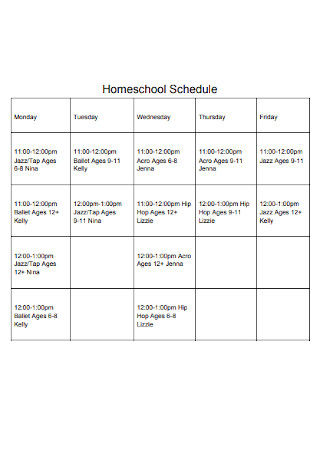
Sample Homeschool Schedule Template
download now -
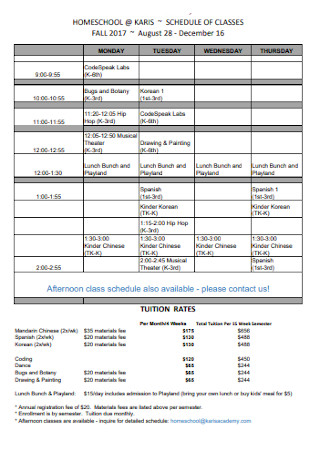
Homeschool Classes of Schedule
download now -
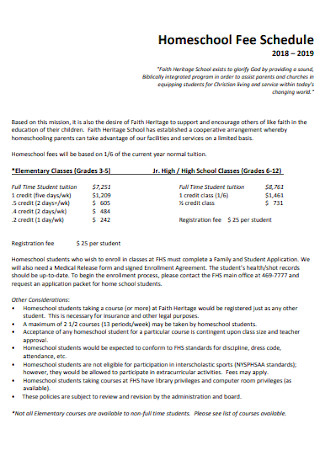
Homeschool Fee Schedule
download now -
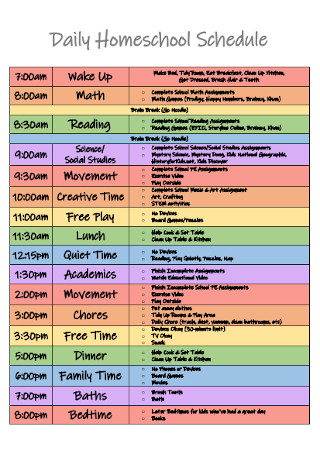
Daily Homeschool Schedule
download now -
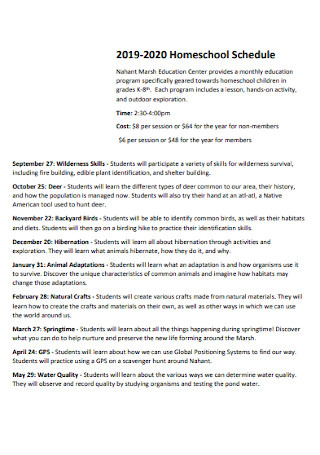
Homeschool Education Schedule
download now -
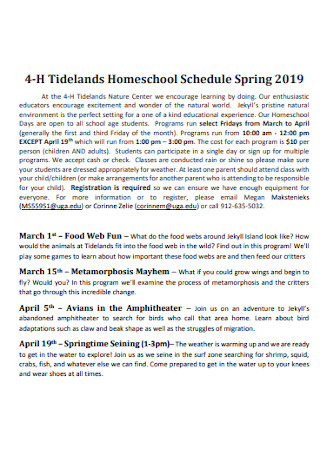
Tidelands Homeschool Schedule
download now -
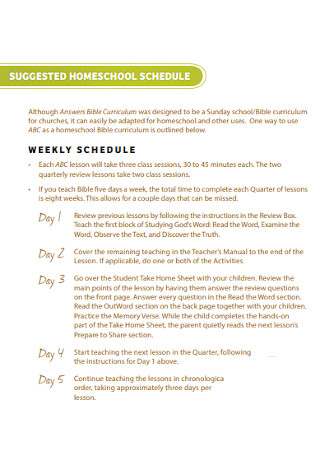
Homeschool Weekly Schedule
download now -
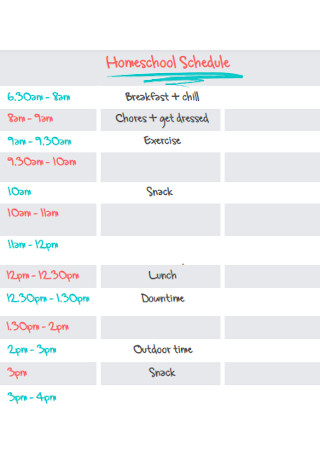
Simple Homeschool Schedule
download now -

Homeschool and Preschool Schedule
download now -

Sample Daily Homeschool Schedule
download now -
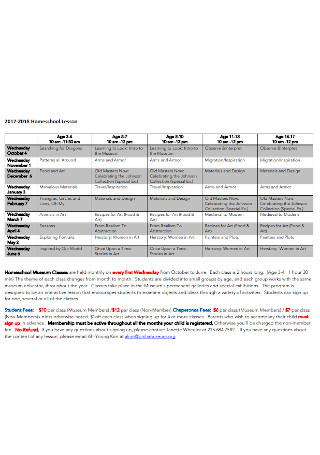
Homeschool Lesson Schedule
download now -
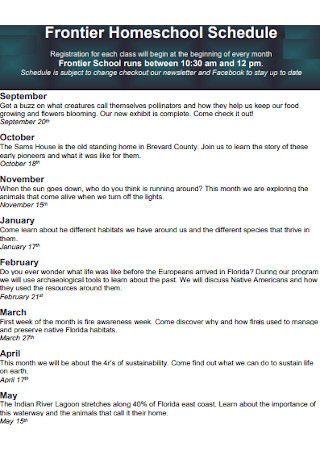
Homeschool Schedule Format
download now -
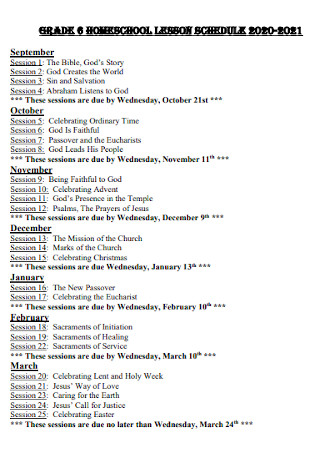
Homeschool Lesson Schedule Template
download now -

Homeschool Teacher Schedule
download now -
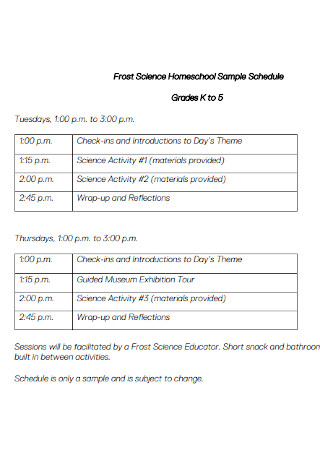
Frost Science Homeschool Sample Schedule
download now -
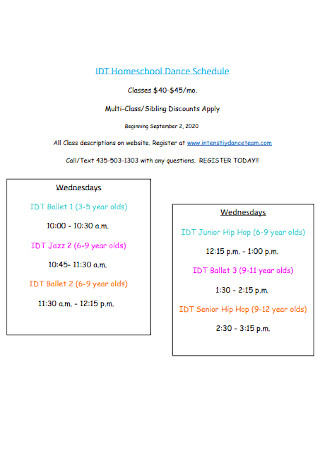
Homeschool Dance Schedule
download now -
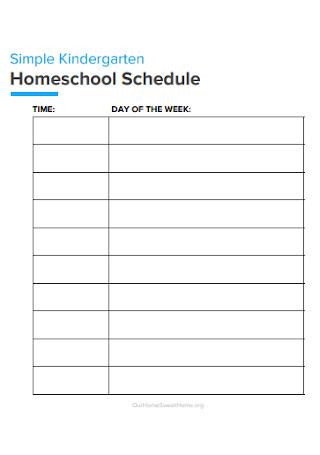
Kindergarten Homeschool Schedule
download now -
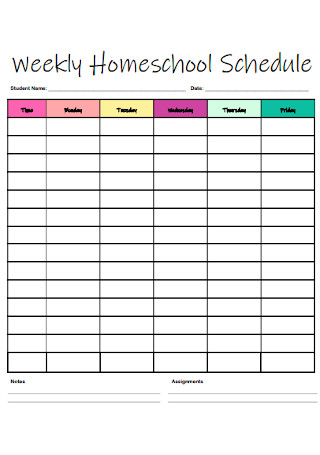
Weekly Homeschool Schedule
download now -
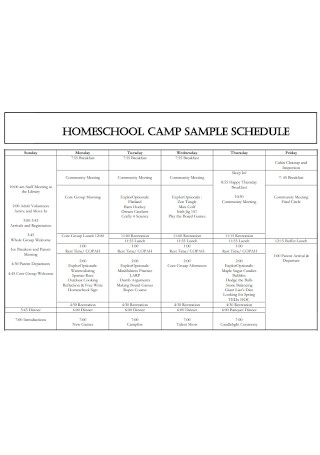
Homeschool Camp Schedule Template
download now -
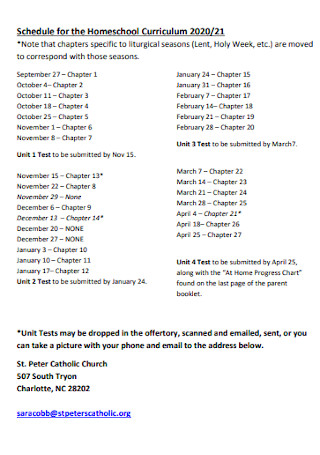
Schedule for the Homeschool Curriculum
download now -
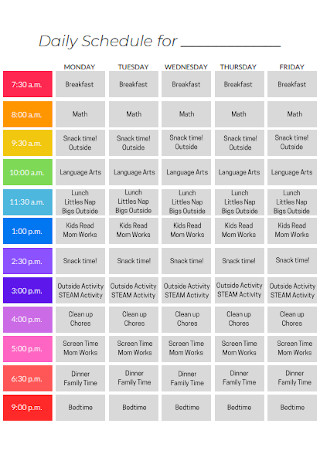
Formal Daily Schedule Template
download now -
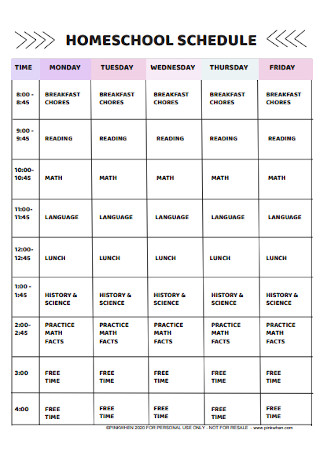
Standard Homeschool Schedule
download now -
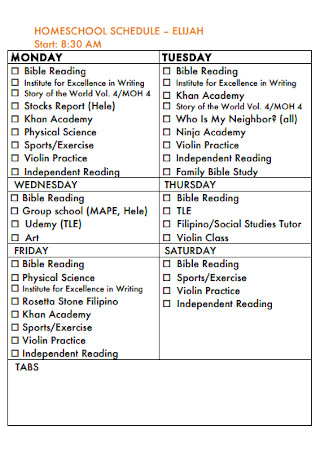
Homeschool Time Schedule Template
download now -
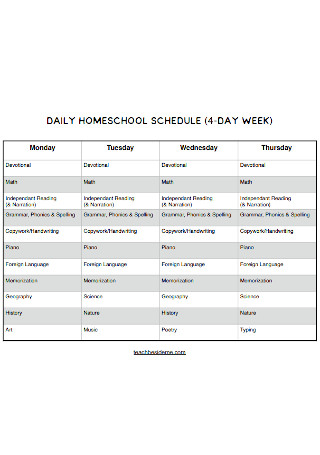
Standard Daily Homeschool Schedule
download now
FREE Homeschool Schedule s to Download
23+ Sample Homeschool Schedules
What Are Homeschool Schedules?
The Basic Components of a Homeschool Schedule
How to Create an Effective Homeschool Schedule
FAQs
What are some tips to maintain a good homeschool schedule?
Who should homeschool a student?
What are some of the homeschool supplies must-haves?
What Are Homeschool Schedules?
A homeschool schedule refers to the organized list of dates and activities for students who are taking homeschool. It is basically a visual schedule of the many days of the week and what subjects to teach per period. And this schedule often works in two ways: (1) the parent or homeschool teacher will prepare the schedule to be guided on how to teach their students, or (2) the student himself/herself will make the schedule to not lose track of what to expect in homeschooling daily, weekly, monthly, etc.
It has been reported that in 2016, 1.69 million students took a homeschool in America alone.
Why Is a Homeschool Schedule Important?
A lot of people assume that homeschooling is easier because you can just stay at home, get a break whenever you want, and other privileges not met in school. However, that is part of the challenge on how students should be engaged to learn and be responsible towards homeschooling. And a homeschool schedule is just the right recipe to ensure both homeschool teachers and students have a routine on what to do at the start of the day down to the afternoon, how to divide time wisely, and how to ensure that students effectively learn from the expected subjects to cover from the school curriculum.
Moreover, homeschool schedules are there to remind you in case you forget what subjects should be taken at a certain time and what other activities are left per day. It is more than just reminding you about the date and time because the underlying subjects per hour or period are useful references as well. Also, a homeschool schedule is applicable to all homeschool students of any level, may it be to someone from preschool, middle school, or high school. And the rest of the family at home can join and help set the schedule to work on a smart and collaborative learning experience.
The Basic Components of a Homeschool Schedule
While it is clear what a homeschool schedule means and why it is important, are you familiar with what a simple homeschool schedule looks like in the first place? There is no single format for a homeschool schedule but there are common elements usually seen from them. And the components in a typical homeschool schedule usually consists of the following:
How to Create an Effective Homeschool Schedule
Instead of getting overwhelmed with the tasks at hand towards homeschooling, welcome it with gratitude. You can certainly ace your homeschool schedule, especially after learning from the various subtopics above. And now for the meat of the article, are you ready to make your own homeschool schedule? Rest assured, you will find the process easy by following these significant steps:
Step 1: Study the School Curriculum
You cannot just make a random choice of subjects and topics to teach in homeschooling. The key is to review the school curriculum first. Be sure that the curriculum fits the education level of the student to keep it relevant. And as you study the curriculum, you will slowly familiarize the number of subjects and what topics to cover for the whole week, month, summer, or semester. Also, this is a good opportunity to make study plans aside from the scheduling process. Thus, make the most out of the curriculum’s data.
Step 2: Make a Draft of the List of Subjects
Next, create a draft of the whole subject list. This is greatly needed for students taking lots of subjects for the school year because it gets harder to keep track of sometimes. If the concern was a toddler schedule, then the list would be easy since it would mostly consist of playtime. Nonetheless, you have to list down the subjects given in the curriculum so you will know what to input in your homeschool schedule later on. A tip is to make a checklist as your guide if you made sure each subject has been added to your schedule or not yet.
Step 3: Assign a Specific Period to Each Subject
Now that you have enlisted the subjects or topics to cover for the homeschool, proceed to assign the time needed for every subject. Think about the student’s time to usually wake up and learn to adjust about when to start in order to balance time wisely. Sometimes, the subjects to cover on Monday will not be the same on Tuesday. Hence, settle those differences and observe time management. In fact, you can always adjust later on if the initial schedule somehow became challenging for the student. And after tons of adjustments, you will eventually find the best routine for the student to work with.
Step 4: Download a Sample Homeschool Schedule
From the draft you created from the subject list and the assignment of time to every subject, expect to use that document for your reference in making a homeschool schedule. To start, download from any of the sample homeschool schedules above this article. And with each fillable template, you can insert the details you wrote from the draft earlier. The best part is each sample template is customizable and even printable. Explore its editable features until you can come up with the homeschool schedule shortly.
Step 5: Complete the Homeschool Schedule’s Components
Of course, you cannot forget about completing the homeschool schedule’s components, which were discussed earlier. Your document may seem incomplete without writing the student’s name, teacher’s details, tables/charts, and so much more. And do not ignore how organized/disorganized your schedule is. Hard-to-follow homeschool schedules only make your experience much harder. The labels should be properly distributed. No subject and time should be left wasted. And most importantly, the whole plan must be doable or it will only be a good plan with poor execution.
Step 6: Keep Your Schedule Flexible
Flexibility is key. Maybe there are times the homeschool teacher gets busy, the student has another important appointment, or any other consideration. Thus, learning to adjust the time is important. If one subject has been missed in a day, then you find a way to insert it the next day or any day of the week to adjust accordingly. Hence, it is not the end of the world if things don’t go always as planned. Instead, adjust flexibly and you will ace homeschooling for sure.
FAQs
What are some tips to maintain a good homeschool schedule?
Here are some ideas of how to maintain a great homeschool schedule:
- Divide larger tasks in each subject into smaller doable tasks.
- Set a routine to remember the whole schedule easier.
- Assign the rest of the family to help in managing the schedule.
- Learn to segregate subjects into priority levels.
- Avoid doing all the subjects in one day; divide it evenly in a weekly calendar.
Who should homeschool a student?
Although homeschooling is legalized in many states, there is a difference in the regulations made towards homeschooling too. The expected answer is to have a licensed homeschool teacher. But it can also be a relative, older sibling, or someone in the family who receives compensation in doing so.
What are some of the homeschool supplies must-haves?
Homeschoolers would likely use the following supplies: pencils, pens, papers, notebooks, colors, markers, glue, folders, whiteboard/blackboard, and more. Be sure to prepare a supply list on what to prepare for homeschooling so you won’t miss a thing.
Always keep in mind that there is no specific formula on what fits best to every homeschooler’s schedule. In fact, the subjects taken, learning abilities, and considerations per student will vary. And the same can be said about homeschool schedules. So be sure to plot wisely on how to conduct an effective homeschooling process for students that still follow the school curriculum. And the best part is you won’t be concerned about creating homeschool schedules from scratch anymore—thanks to sample homeschool schedules. Draft a schedule now!
